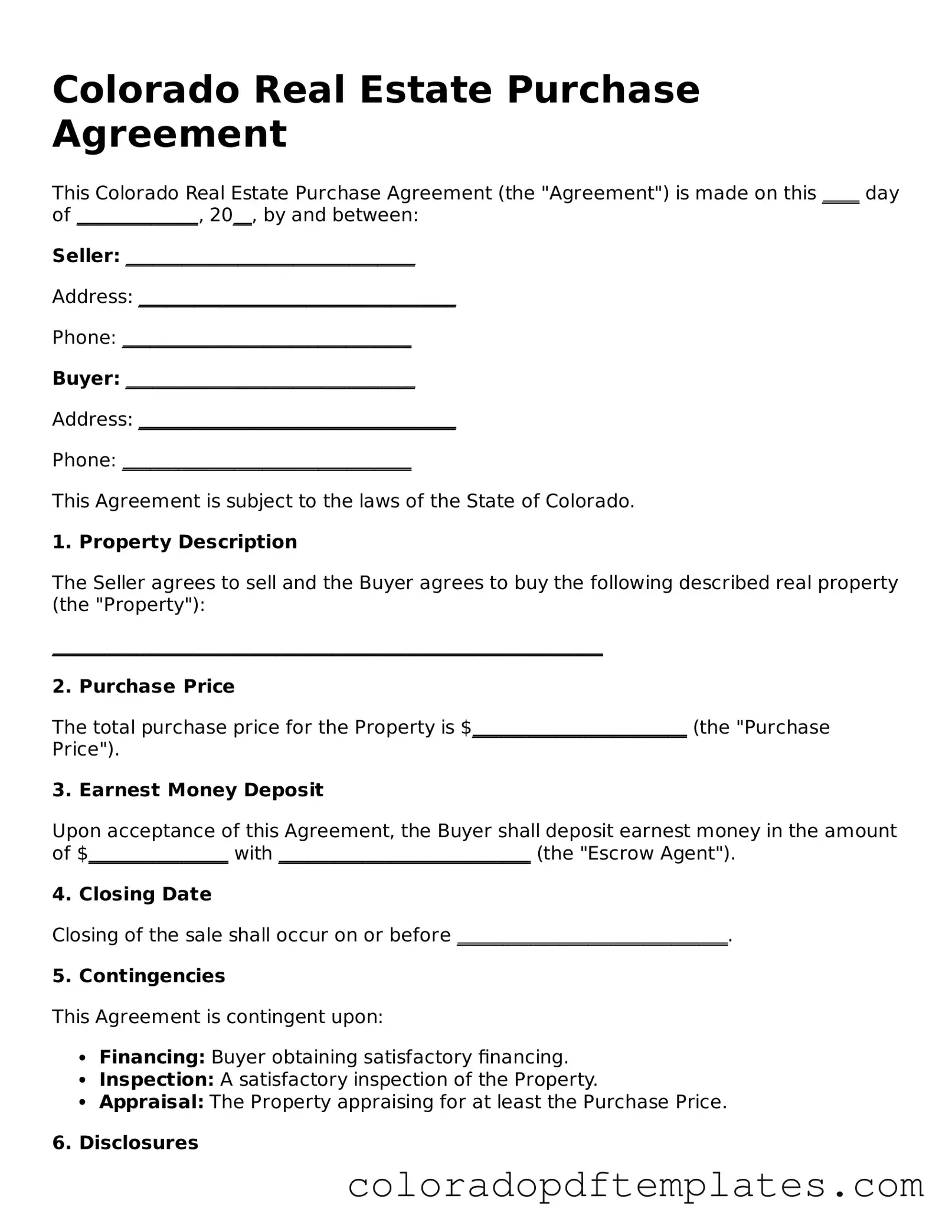What is a Colorado Real Estate Purchase Agreement?
The Colorado Real Estate Purchase Agreement is a legally binding document used in real estate transactions within the state of Colorado. It outlines the terms and conditions under which a buyer agrees to purchase a property from a seller. This agreement details essential aspects such as the purchase price, financing arrangements, and contingencies that must be met for the sale to proceed.
Who typically uses the Colorado Real Estate Purchase Agreement?
This agreement is primarily used by buyers and sellers of residential real estate. Real estate agents and brokers also utilize this document to facilitate transactions on behalf of their clients. Additionally, attorneys may be involved to ensure that all legal requirements are met.
What key components are included in the agreement?
The Colorado Real Estate Purchase Agreement includes several important sections, such as:
-
Parties Involved:
Identification of the buyer and seller.
-
Property Description:
Detailed description of the property being sold.
-
Purchase Price:
The agreed-upon price for the property.
-
Financing Terms:
Information about how the buyer will finance the purchase.
-
Contingencies:
Conditions that must be satisfied for the sale to proceed, such as inspections or financing approval.
-
Closing Date:
The date when the transaction will be finalized.
Can the agreement be modified after it is signed?
Yes, the Colorado Real Estate Purchase Agreement can be modified after it is signed, but both parties must agree to any changes. Modifications should be documented in writing and signed by both the buyer and the seller to ensure clarity and legality.
What happens if a buyer wants to back out of the agreement?
If a buyer wishes to back out of the agreement, they must refer to the contingencies outlined in the contract. If the buyer can invoke a contingency, such as failing a home inspection, they may be able to cancel without penalty. However, if no contingencies apply, the buyer may face legal consequences or financial loss, such as forfeiting their earnest money deposit.
Is an earnest money deposit required?
While not legally required, an earnest money deposit is commonly included in the agreement. This deposit demonstrates the buyer's serious intent to purchase the property. The amount varies but typically ranges from 1% to 3% of the purchase price. If the transaction proceeds, this deposit is applied to the purchase price at closing.
What is the role of contingencies in the agreement?
Contingencies are conditions that must be met for the sale to proceed. They protect both the buyer and the seller. For example, a buyer may include a financing contingency to ensure they secure a loan before finalizing the purchase. If the contingencies are not met, the buyer may have the right to back out of the agreement without penalty.
How long is the agreement valid?
The validity of the Colorado Real Estate Purchase Agreement depends on the terms set within the document. Typically, the agreement will specify a closing date, and if the sale does not close by that date, the agreement may become void unless both parties agree to extend it.
What should a buyer do if they have questions about the agreement?
If a buyer has questions about the Colorado Real Estate Purchase Agreement, it is advisable to consult with a real estate agent or an attorney. These professionals can provide clarity on specific terms, obligations, and potential implications of the agreement, ensuring that the buyer fully understands their rights and responsibilities.
